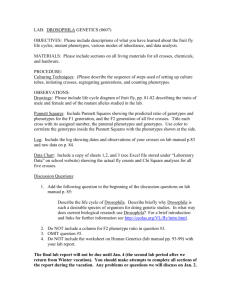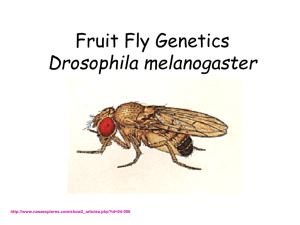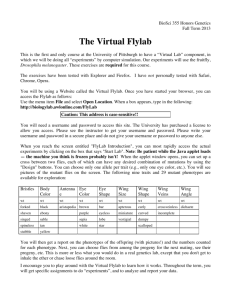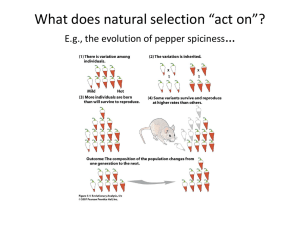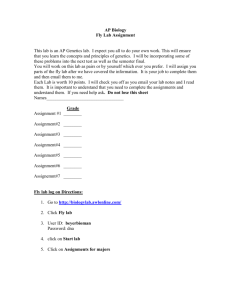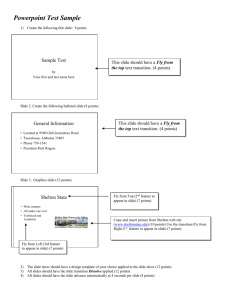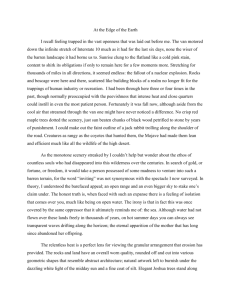Review for Lab report 2 and overview of Fly data
advertisement
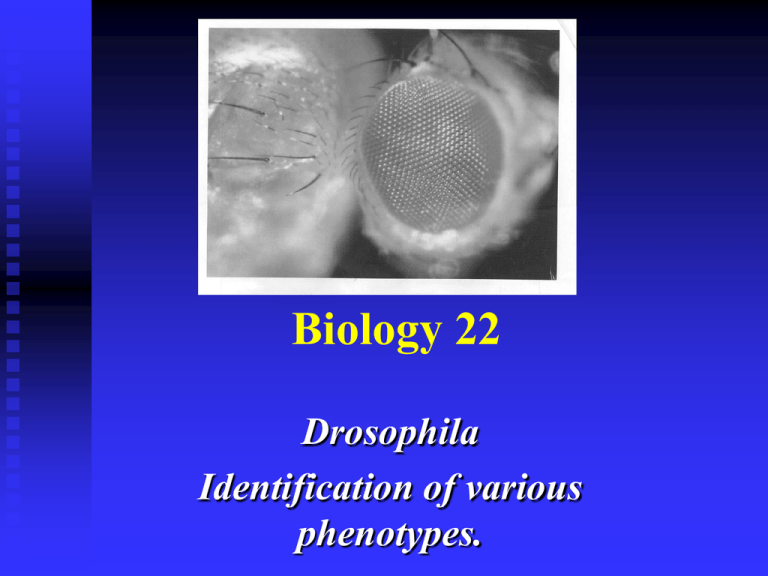
Biology 22 Drosophila Identification of various phenotypes. DATA POSTED FOR TWO EXPERIMENTS 1. Various Drosophila crosses and number of flies with the phenotypes of body color and gender of same fly. 2. Three-point test cross: look at three different phenotypes on the same fly; wing length, body color and eye color. Experiment 1. Parental phenotypes Experiment: body color A= female: wt (beige) B=female: wt (beige) C=male: wt (beige) D=female: mutant (yellow) E=male: mutant (yellow) What are the color and gender of each fly? Note: data recorded body color gender Wild Type Versus Mutants Body Color Wild type: Beige Mutant: Yellow body Fruit Fly Body Color Experiment 2: 3 point test cross: Experiment 2 3 point test cross Eye color Body color Wing length 3 point test cross for: ♦ Wt vs. Mutant 1. Body Color Beige (bl+) vs. Black (bl) 2. Wing length Long(vg+) vs. Vestigal(vg) 3. Eye Color Brick red (br+) vs. brown (br) Crosses: Female Males bl+ vg+ bw+ bl vg br X bl vg bw bl vg br Males and female progeny from this F2 cross are your 3 point test cross results! Fruit Fly Wings Eyes Lab Report Experiment 1: Use the data to calculate Chi-Square analysis to determine if observed versus expected supports or rejects the Ho (null hypothesis). Experiment 2: Use the data to determine the arrangement of the 3 genes for body color, eye color and wing length. Lab Report Use the data provided to fill in the tables (provided in the lab manual) and perform the calculations required. Lab report is can be handed in May 29th (one week later)
